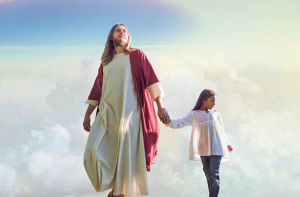Lyrics
I have decided to follow Jesus,
I have decided to follow Jesus,
I have decided to follow Jesus.
No turning back, no turning back.
我已经决定要跟随耶稣,
我已经决定要跟随耶稣,
永不回头, 永不回头。
The world behind me, the cross before me,
The world behind me, the cross before me,
The world behind me, the cross before me.
No turning back, no turning back.
世界在背后十架在前头,
世界在背后十架在前头,
世界在背后十架在前头,
永不回头, 永不回头。
I will follow You, Jesus.
I will follow You, Jesus.
I will follow You, Jesus.
I will follow You!
我要跟随祢耶稣,
我要跟随祢耶稣,
我要跟随祢耶稣,
我要跟随祢!
Though none go with me, still I will follow,
Though none go with me, still I will follow,
Though none go with me, still I will follow.
No turning back, no turning back.
纵无人陪伴我仍要跟随,
纵无人陪伴我仍要跟随,
纵无人陪伴我仍要跟随,
永不回头, 永不回头。
Though I may wander, I still will follow,
Though I may wander, I still will follow,
Though I may wander, I still will follow.
No turning back, no turning back.
虽我曾徘徊我仍要跟随,
虽我曾徘徊我仍要跟随,
虽我曾徘徊我仍要跟随,
永不回头, 永不回头。
Will you decide now to follow Jesus?
Will you decide now to follow Jesus?
Will you decide now to follow Jesus?
No turning back, no turning back.
你是否决定要跟随耶稣,
你是否决定要跟随耶稣,
你是否决定要跟随耶稣,
永不回头, 永不回头。
================================================
我决定跟随耶稣是基督教的赞美诗,起源于印度阿萨姆邦。
根据乔布斯(P. Job)的说法,歌词取材于梅加拉亚(Meghalaya)部落的加洛人(Nokseng)的遗言。
据说他在约翰和他的家人被杀时背诵了约翰福音第十二章的经文。另一种传统将赞美诗归功于阿萨姆邦乔哈特的西蒙·马拉克。
这些话成为赞美诗的形成归因于印度传教士萨杜·桑达·辛格。旋律也是印度的,在文本起源的地区之后冠以“ Assam”的名字。
美国赞美诗编辑威廉·延森·雷诺兹(William Jensen Reynolds)编排了这首歌,并编入了1959年的《汇编歌集》。
他的版本成为Billy Graham在美国和其他地方举行的布道会的常规功能,因此广受欢迎。
由于歌词明确地专注于信徒自己的承诺,因此赞美诗被认为是决策神学的主要例子,强调人类的回应,而不是上帝赋予信仰的行动。
这导致它被排除在一些赞美诗之外。路德教会的一位作家指出:“唱歌时,它的意义肯定与创作它的人不同。”
I Have Decided to Follow Jesus is a Christian hymn that originated in Assam, India.
According to P. Job, the lyrics are based on the last words of Nokseng, a Garo man, a tribe from Meghalaya which then was in Assam, who converted to Christianity in the middle of the 19th century through the efforts of an American Baptist missionary. He is said to have recited verses from the twelfth chapter of the book of John as he and his family were killed. An alternative tradition attributes the hymn to Simon Marak, from Jorhat, Assam.
The formation of these words into a hymn is attributed to the Indian missionary Sadhu Sundar Singh. The melody is also Indian, and entitled "Assam" after the region where the text originated.
An American hymn editor, William Jensen Reynolds, composed an arrangement which was included in the 1959 Assembly Songbook. His version became a regular feature of Billy Graham's evangelistic meetings in America and elsewhere, spreading its popularity.
Due to the lyrics' explicit focus on the believer's own commitment, the hymn is cited as a prime example of decision theology, emphasizing the human response rather than the action of God in giving faith. This has led to its exclusion from some hymnals. A Lutheran writer noted, "It definitely has a different meaning when we sing it than it did for the person who composed it."
[from wikipedia]


